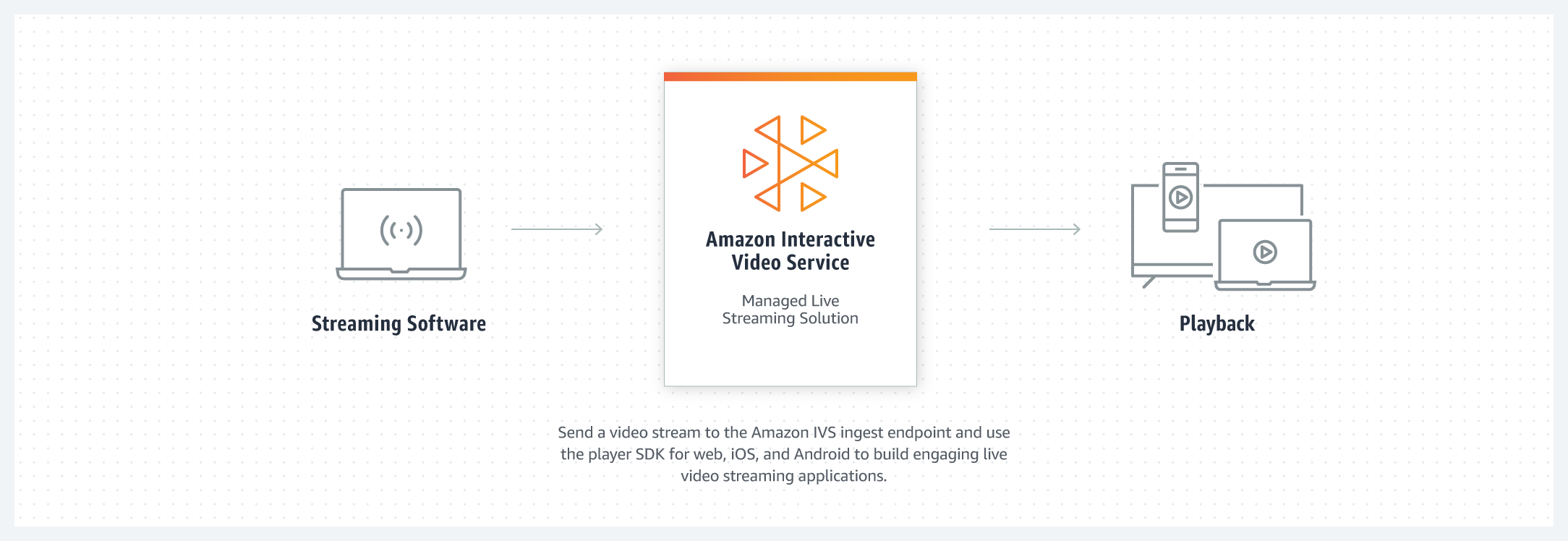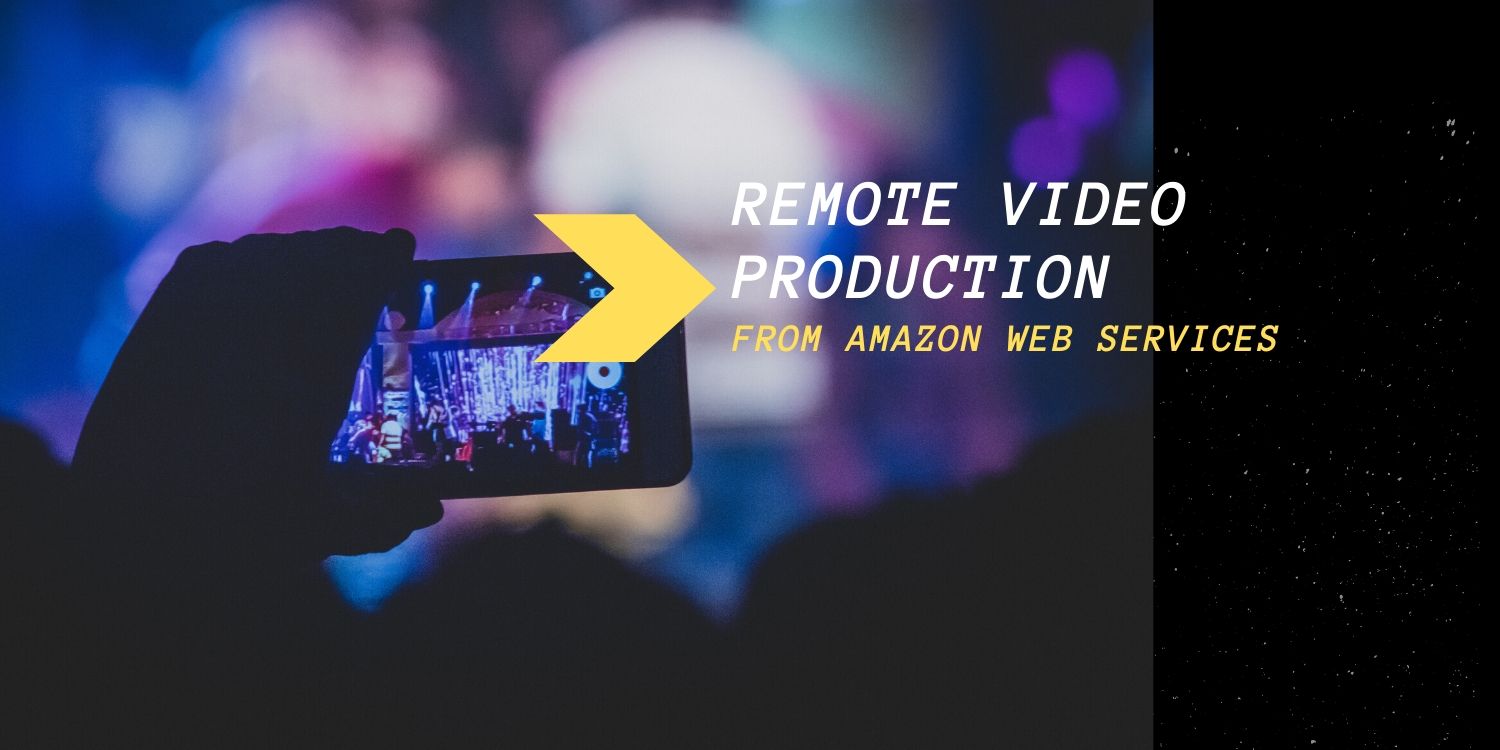User generated Content to build engaging live stream experiences — Video, Podcast and Audio Books are Perfect Ways to Interact with Audience Groups and Generate Revenue with Scalable Effectiveness
“Hey, create your own Amazon Prime Videos Series!”
How would you feel if someone from Amazon Web Services informs you can actually do this now?
OK, joking right?
Oh, really, it’s awesome.
I like watching videos, but can’t create one.
I want to do it… let’s do it.
That’s OK…
The truth is, AWS has actually managed to deliver on this with the latest product launch targeting Video Services market.
2020 has been projected as the year when video streaming wars would intensify. Existing OTT landscape has already been disrupted with a flurry of on-demand innovations in the form of AR VR immersive formats, AI and Programmatic advertising. Gaming experience is ruling the roost in the current OTT industry, even as almost 100% of the audience groups continue to consume VOD and live streaming content from their current lockdown locations– their homes. But, the gap between creation and distribution gives rise to latency– a spectacular opportunity for video content creators to jump in and publish their own content in less than 10 seconds (if not sooner).
It’s true that setting up the infrastructure to keep pace with consumer demand for live video is complex, time-consuming, and expensive.
World’s top Cloud services provider Amazon Web Services (AWS) has announced the launch of the Amazon Interactive Video Service (Amazon IVS).
At the time of this announcement, Martin Hess, GM, Amazon IVS said —
“Customers have been asking to use Twitch’s video streaming technology on their own platforms for a range of use cases like education, retail, sports, fitness, and more. Now with Amazon IVS, customers can leverage the same innovative technology that has taken Twitch over a decade to build and refine. Any developer can build an interactive live streaming experience into their own application without having to manage the underlying video infrastructure.”
What is Amazon IVS?
Amazon IVS is a new fully managed service that makes it easy to set up live, interactive video streams for a web or mobile application in just a few minutes.
Amazon IVS is an app and web-focused capability that enables customers to add live and interactive video. Amazon IVS uses a similar technology as Twitch. Twitch is one of the most popular live streaming services in the world).
 Currently, Twitch caters to a wide array of online audience who watched nearly 10 billion hours of video in 2019. Live content is a very powerful media for marketing and influencers, even as latency has significantly fallen in the last 3 years. With Amazon IVS, video content creation teams can share live streaming media in less than 3 seconds — significantly lower than the current industry standards of 20-30 seconds.
Currently, Twitch caters to a wide array of online audience who watched nearly 10 billion hours of video in 2019. Live content is a very powerful media for marketing and influencers, even as latency has significantly fallen in the last 3 years. With Amazon IVS, video content creation teams can share live streaming media in less than 3 seconds — significantly lower than the current industry standards of 20-30 seconds.
Time-Cost Optimization: Video Creation to Meet Marketing and Advertising Budgets
Amazon IVS removes the cost and complexity associated with setting up live, interactive video streams.
You not only have the power to create contextual content within seconds but also promote them to your target audience with interactive experiences. Video experiences are vastly different from the ones we expect from branded content in any other format. Videos created in less than 10 seconds time frame need to be high-quality with great audio rendition and descriptions to support visually challenged audience groups.
No buffering, zero disruptions
Today’s viewers require higher-resolution content and smooth video playback without buffering or delays no matter where they are or what device or application they are using.
Viewers have also come to expect more interactivity in live streaming, so they can engage with those experiences (and others watching) as events unfold, not moments after they happen.
Today, it takes customers months to build interactive applications with video workflows for content ingestion, processing, and distribution, and then they still need to configure transcoders for adaptive-bitrate-formatted streaming to support multiple types of devices, select the appropriate streaming protocols, set up the content delivery networks (CDNs), and integrate video players.
Amazon IVS is a fully managed service that makes high-quality, live-streaming video available to viewers around the world with latency that can be less than three seconds (as opposed to 20-30 seconds), so customers no longer need to make a tradeoff between interactivity and quality of service.
In addition, content creators can use an online media of their choice– website, mobile application, etc. Amazon IVS helps users to configure and stream live video with scalable delivery options to support local as well as global viewers concurrently.
That’s not all–
AWS has ensured that video content teams can take live streaming media to various sharing platforms, where trends related to content consumption behavior can be accurately tracked, measured and analyzed. A step in the right direction, considering how a majority of publishers and advertisers are yet to fully optimize their video inventories and marketing budgets around interactive formats.
With the Amazon IVS SDK and APIs, customers can also build interactive features into their live streams like virtual chat spaces, votes and polls, moderated question and answer sessions, and synchronized promotional elements.
Network-specific Rendition, ala YouTube casting
End-user controls the videos that they want to watch.
But, giving them the same video quality based on their screen is now at your fingertips. Live-streamed interactive content still requires minimal latency for a good user experience. However, traditional video streaming requires video to be produced in various resolutions and divided into segments for delivery.
Amazon IVS lets video creators auto-manage multiple segments of video formats depending on the viewer’s network and device to optimize quality of service, all of which creates a lot of extra latency. This removes additional effort at the viewers side when they try to switch and toggle between vertical-horizontal maneuvers or click on the screen to stop buffering.
How to Use Amazon IVS?
To get started, customers simply send their live video to Amazon IVS using standard streaming software like Open Broadcaster Software (OBS).
Amazon IVS ingests the video, then automatically transcodes and optimizes it, making it available for live delivery across AWS-managed global infrastructure in seconds using the same video transfer technology Twitch uses for its live streaming service. Content creators and developers can use the Amazon IVS player SDK to give audiences a consistent, low-latency live streaming experience across different viewing platforms and devices, without compromising video quality or increasing buffering.
Customers can then combine the Amazon IVS SDK and APIs to attach structured text data to video streams, and create interactive content, including polls, surveys, and leaderboards, all of which are automatically synchronized to the live video.
For example, a developer making a trivia application or a virtual town hall can use the API to ensure that viewers see the same questions at the same moment in the live video stream. With Amazon IVS, customers can now directly access the same technology that powers Twitch to create engaging live video experiences in their own applications and deliver them to viewers around the world.
“With Amazon IVS, handling live video streams is very simple, which means we can devote more time to producing engaging content and features that allow viewers to interact with creators in real-time,” said John Katsavrias, Senior Development Manager, Amazon Live.
John explains, “Amazon IVS enabled us to move quickly to unlock our creators’ ability to livestream so they can produce awesome content that inspires customers and helps them discover new products.”
Blackboard’s mission is to advance learning in partnership with the world’s education community. “Blackboard serves millions of users in countries in every region around the globe. As instructional techniques evolve and we continue to grow, we’re exploring how we can improve our interactive video experiences for all users, which is where Amazon IVS is changing the game,” said Scott Hurrey, Staff Engineering at Blackboard.
Scott added, “In one day, we were able to quickly integrate IVS into our teaching and learning workflow. It handles a majority of the work on the back end, freeing up more time for our team focus on creating and building standout experiences.”
17Live is an interactive live video app that connects entertainers around the world with their fans. “Integrating with Amazon IVS allows us to help our entertainers engage larger audiences with more interactive experiences and expand into new geographies,” said Eric Hsu, VP of Engineering at M17 Group. “The end-to-end service allows us to address our scaling, quality of service, and expansion challenges.”
DeNA’s Pococha is a pioneer in Japanese live streaming. “Amazon IVS provides the leading edge of live video technology transformations and maintains high availability systems, all while reducing the operational burden of managing complex, distributed live video networks,” said Daisuke Mizuta, Producer of Pococha at DeNA. “With it, we can focus more on enhancing user-oriented functions and interactivity to ensure we’re providing an irreplaceable experience.”
ScreenCloud helps businesses communicate better with teams and customers by transforming their spaces with smart, connected digital signage. “The ease of use and simplicity of Amazon IVS allows us to focus on delivering innovation rather than worrying about video infrastructure,” said Luke Hubbard, CTO of ScreenCloud. “We have been able to quickly integrate video conferencing tools with Amazon IVS to provide our customers an interactive broadcast solution.”
The Amazon IVS Management Console and APIs for control and creation of streams are available in the US East (N. Virginia), US West (Oregon), and Europe (Ireland) regions, with video ingestion and delivery available around the globe over a separate managed network of infrastructure that is optimized for live video.
Today, AWS offers over 175 fully featured services for compute, storage, databases, networking, analytics, robotics, machine learning and artificial intelligence (AI), Internet of Things (IoT), mobile, security, hybrid, virtual and augmented reality (VR and AR), media, and application development, deployment, and management from 77 Availability Zones (AZs) within 24 geographic regions, with announced plans for nine more Availability Zones and three more AWS Regions in Indonesia, Japan, and Spain.











